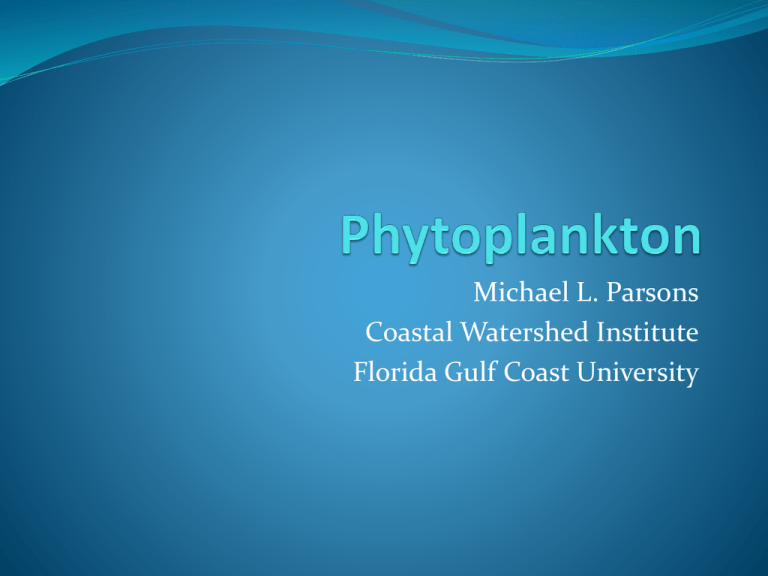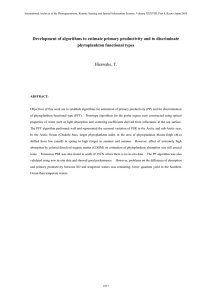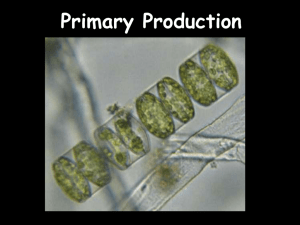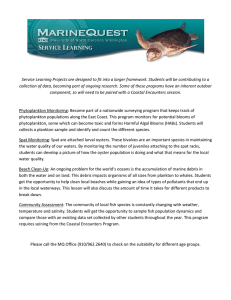Phytoplankton
advertisement

Michael L. Parsons Coastal Watershed Institute Florida Gulf Coast University Phytoplankton (microalgae) Cyanobacteria (Microcystis) Diatom (Pseudo-nitzschia) Diatom (Actinoptychus) Chlorophyte Dinoflagellate (Karenia brevis) Silicoflagellate Diatom (Chaetoceros) Dinoflagellate (Gambierdiscus) Haptophyte Overview The Good: phytoplankton are the base of the foodweb The Bad: too much can have negative impacts The Ugly: some phytoplankton can produce toxins that can kill animals and make people sick Food Web Phytoplankton Growth Requirements Light Nutrients (nitrogen, phosphorus, carbon, other compounds) Can serve as indicators of nutrient loading and light availability fish phytoplankton The Good nutrients plankton The Bad The Ugly Phytoplankton and the Caloosahatchee Many factors that affect the growth of phytoplankton in the Caloosahatchee are controlled/influenced by the flow of the river. As flow increases: nutrients phytoplankton residence time phytoplankton salinity assemblage shift flow nutrients phytoplankton Doering et al. 2006 flow residence time phytoplankton Wan et al. 2013 Doering et al. 2006 flow residence time phytoplankton Wan et al. 2013 flow salinity assemblage shift Andresen 2011 Andresen 2011 Red Tides and Caloosahatchee Discharges Brand, unpub. Brown et al. 2006 Red tide frequency versus S79 N loading % of samples >100,00 Karenia brevis per liter 35 28 21 14 7 0 0 2000 4000 6000 mg N/cf/s 8000 10000 “The combined flux of N and P from TB, CH, and the Caloosahatchee River could theoretically supply 11–50% of the N and 11–57% of the P required to support growth of the measured population abundance for each of the three blooms” Workshop Questions What driver is the indicator sensitive to? Nutrients, salinity, light What constitutes a healthy population of the indicator? Low/moderate cell concentrations; more diatoms and less cyanobacteria and flagellates Is the indicator a valued component of the Caloosahatchee system? Should be! What metrics are appropriate for assessing this indicator? Chlorophyll concentrations; species identifications Workshop Questions What are the strengths and limitations of this indicator? Chlorophyll is an easy (and strong) response variable to measure Cofounding factors (salinity and nutrients; flow and residence time) What are the relevant gaps and uncertainties in our understanding of the relationship between drivers/stressor and indicator response? Teasing out nutrient loading versus residence time Role of Caloosahatchee in red tides Could our use of this indicator be improved to address additional drivers/stressors? Yes – can help to optimize flow regimes in different conditions Next steps? River and red tides Assemblage shifts versus flow









